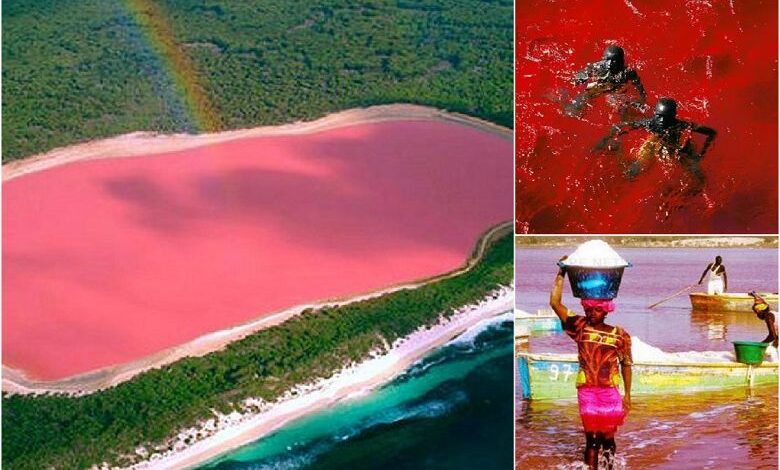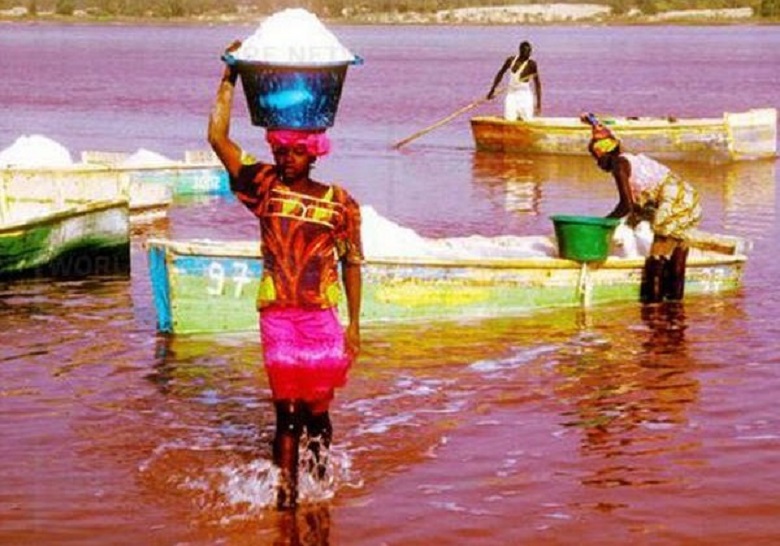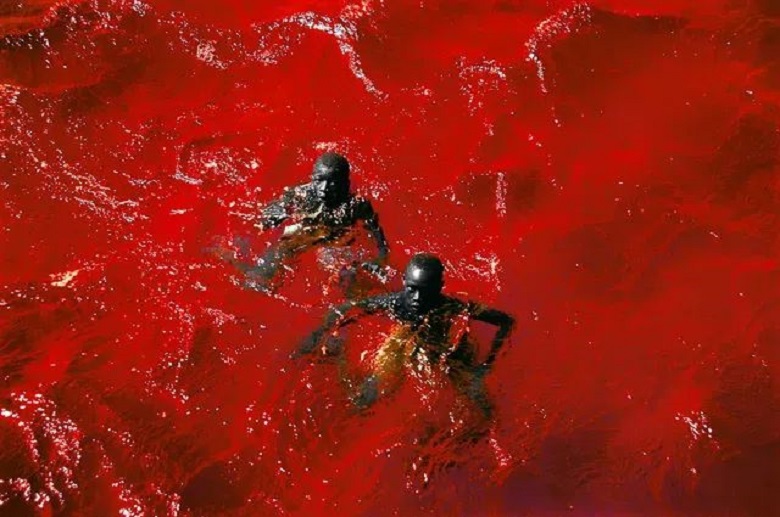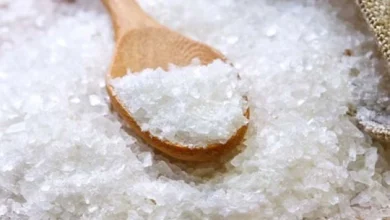White salts, pink water, golden sands: The mysterious “Dead Sea”

African is a continent with many mysterious things, not only the Dead Sea of Senegal, the weird moving mountain in Tanzania, the mystery people of Dogon, the blue eye of Mauritania, or how the pyramid was built.
The fantastic pink lake Retba is one of the most amazing natural attractions in Senegal. Bright – in the literal sense of the word, because Retba is famous for its amazingly juicy pink water, sparkling under the hot sun rays in thousands of carmine, purple and even orange shades.
At the Dead Sea, you can also observe the traditional salt extraction method and even stand at the very place where the Paris – Dakar rally once ended, the finish of which, before the route transfer to South America, was located precisely the shores of Lake Retba.
In the Dead Sea of Senegal, the unearthly landscape of Retba comprises snow-white mountains of salt, bright pink water surface and golden sand of the Green Peninsula of Senegal.
Natural phenomenon
Retba separated from the Atlantic Ocean by only a strip of low dunes. The underground salt waters of the Atlantic generously feed this reservoir, from which there is no outflow of water. So, for thousands of years, the concentration of salt here increased – and today, Lake Retba, in terms of salinity in the dry period from November to June, quickly “makes up” the untwisted Dead Sea: the salt content in the water reaches 40%. By the way, the length of the lake is about 2 km, and the depth is no more than 3 meters.

The fantastic pink shade of the water results from the vital activity of a special kind of cyanobacteria that feed on salt. These bacteria produce a pink pigment to “attract” a specific spectrum of solar radiation necessary for their life. Well, then the pink dye saturates the water in Retba and colours its surface with unique shades.
Incredible Retba Lake
It makes sense to admire Retba Lake several times during the day (or several). Depending on the lighting, the water in the lake changes colour from pale pink, almost white, to deep purple, rusty, purple and even red.
Another unusual sight on Retba is salt extraction traditionally. Workers manually collect wet deposits of this mineral from the lake bed and deliver it to the shore in baskets, where they lay out the salt to dry and then collect it in colourful salt pyramids. Later, salt from Retba is used mainly for preserving fish.
The amount of salt in Retba is so high that you cannot lie here with a book in your hands on the motionless surface of the lake – the mineral very soon begins to erode the skin. As for the salt miners, rub their bodies with shea butter, which prevents the insidious mineral from contacting the skin’s surface.

And on the other side of Retba, facing the Atlantic, there is a ridge of low, graceful dunes. In a word, the landscapes here are mesmerizing: snow-white mountains of salt, bright pink water surface and golden sand of the Green Peninsula of Senegal.
A wonder of the African continent
About thirty kilometres from Dakar, on the Cap-Vert peninsula, Lake Retba is known worldwide for its pink colour. It was for a long time the arrival stage of the Paris-Dakar, which contributed to its fame. Since then, people come to see it from everywhere.
A few meters from a beach with turquoise waters, it stretches over three km². Between dune landscape and lush vegetation, it is the place for four × four-horse camel rides, but it is not ideal for swimming: because of its very high salt content, the water holds its beautiful pink colour.
Before being a must-see tourist site, Lake Retba has exploited its salt since the 1970s and deposited in a thick crust at the bottom of the shallow lake, the salt broken using large sticks, then deposited on canoes. It then dries on the edges of the lake to be marketed.
To break up the salt, men spend whole days in very corrosive water: they protect their skin by covering themselves with a thick layer of shea butter.
Why is the water pink?
The water in Lake Retba has only been pink for about 40 years. Its pink is changeable, can go from candy pink to a reasonably deep mauve, and the colour palette is not due to a difference in lighting.

While the Atlantic Ocean has 30g of salt per litre and the Dead Sea 250g/L, Lake Retba accumulates more than 320g of salt per litre due to its proximity to the ocean: it retains salt. Some bacteria still manage to develop in these extreme conditions: the microscopic algae – cyanobacteria – present in the water produce a red to orange pigment, similar to beta-carotene, to fight against the salt. The algae thus protect itself from dehydration.
The development of the pigment depends on the salinity rate of the water: air temperature, light, water evaporation will play their part in the colour of the water. The drier the air, the brighter the colour. The pink is very marked when the wind blows in the dry season, when the air is hottest, in the centre of the day.




